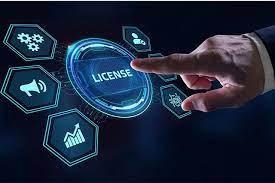Understanding Software Licenses: A Comprehensive Guide
Software licenses are essential legal documents that govern how software can be used, distributed, and modified. They play a crucial role in the software industry, ensuring that developers and users adhere to specific terms and conditions. In this comprehensive guide, we will explore the different types of software licenses, their significance, and how they impact both developers and users.
What is a Software License?
A software license is
a legal agreement between the software developer or publisher (licensor) and
the user or organization (licensee). It outlines the terms and conditions under
which the software can be used, including restrictions, permissions, and
potential obligations. Software licenses serve as a way to protect the
intellectual property rights of the software while allowing users to utilize it
within defined boundaries.
Types of Software Licenses
There are various
types of software licenses, each with its own set of conditions. Here are some
of the most common ones:
1. Proprietary or Closed-Source Licenses: In a proprietary software license, the developer retains
full control and ownership of the software. Users are usually granted a limited
right to use the software under specific terms. Microsoft Windows and Adobe
Photoshop are examples of proprietary software.
2. Open Source Licenses: Open source licenses promote transparency and collaboration by
granting users the right to view, modify, and distribute the software's source
code. The most well-known open source license is the GNU General Public License
(GPL), but there are many others like the MIT License, Apache License, and the
Mozilla Public License.
3. Freeware Licenses: Freeware is software that is distributed for free, and users
are granted the right to use it without charge. However, the license may impose
restrictions on modification or redistribution. An example is CCleaner.
4. Shareware Licenses: Shareware allows users to try a software product before
purchasing it. Often, shareware includes a trial period, after which users are
required to pay for continued use. WinRAR is a well-known example of shareware.
5. Commercial Licenses: Commercial software licenses are typically used for business
applications. They often require the purchase of a license or subscription to
use the software. Microsoft Office is a prime example of commercial software.
6. Public Domain Licenses: Software under a public domain license is not protected by
copyright, and anyone can use, modify, and distribute it without any
restrictions. Essentially, it is free of any legal obligations. An example of
public domain software is SQLite.
Importance of Software Licenses
Software licenses are
essential for several reasons:
1. Protection of Intellectual Property: Licenses safeguard the intellectual property
rights of developers by specifying who can use, modify, and distribute their
software.
2. Legal Compliance: Using software without a valid license can lead to legal
repercussions, including fines or lawsuits. Compliance with software licenses
is crucial to avoid legal issues.
3. User Rights and Expectations: Licenses clarify what users can and cannot do with the
software, setting expectations and ensuring that users are aware of any
restrictions.
4. Support and Updates: Many software licenses provide users with access to support,
updates, and new features during the license's active period.
License Elements
Software licenses
typically include several key elements:
1. License Grant:
Defines what the licensee is allowed to do with the software, such as use,
modify, or distribute it.
2. Restrictions:
Outlines limitations on the use of the software, such as prohibiting reverse
engineering, decompilation, or redistributing the software without permission.
3. Termination:
Specifies conditions under which the license may be terminated, often related
to violations of the license terms.
4. Warranty and Liability: Addresses whether the software is provided "as is"
or with warranties, and the extent of liability in case of software defects.
5. License Version: Indicates the version of the license agreement, which may change
over time.
6. Jurisdiction:
Determines the legal jurisdiction and venue in case of disputes.
Choosing the Right License
For developers,
choosing the right software license
is a critical decision. It should align with your goals for the software,
whether that's maximizing distribution, collaboration, or revenue. Licensing
decisions should also consider how the software will be used, whether for
personal, academic, or commercial purposes.
For users, understanding the terms of a
software license is equally important. Violating a license agreement, even
unintentionally, can have legal consequences. It's crucial to read and
comprehend the license terms before using any software.
Conclusion
Software licenses are the foundation of the software industry,
governing the use and distribution of software products. Whether you're a
developer or a user, understanding the various types of licenses and their
implications is essential. It's the key to ensuring that software is developed,
used, and shared in a way that respects both intellectual property rights and
user rights. Always take the time to read and comprehend the terms of a
software license before proceeding to use or distribute the software.




মন্তব্যসমূহ
একটি মন্তব্য পোস্ট করুন